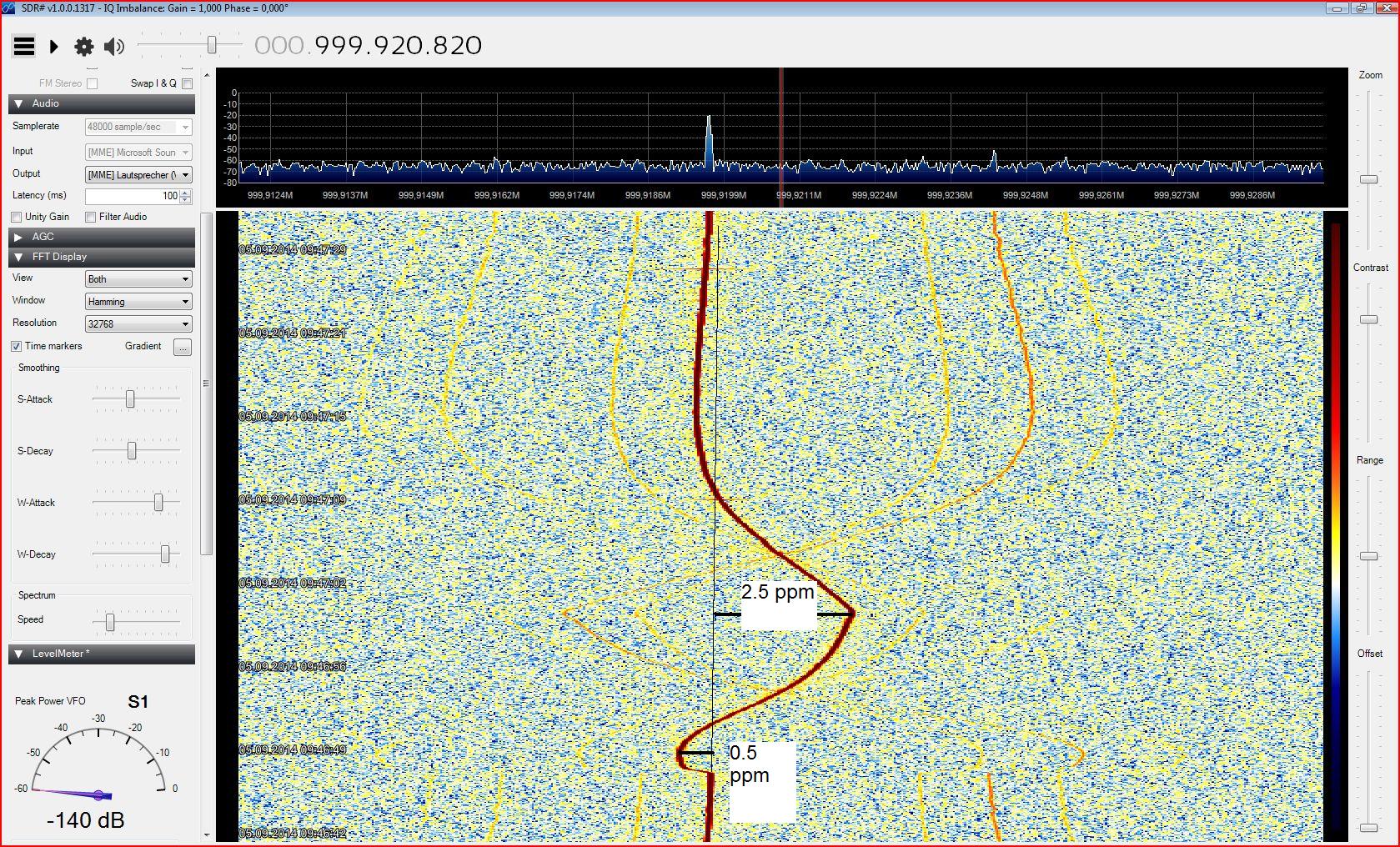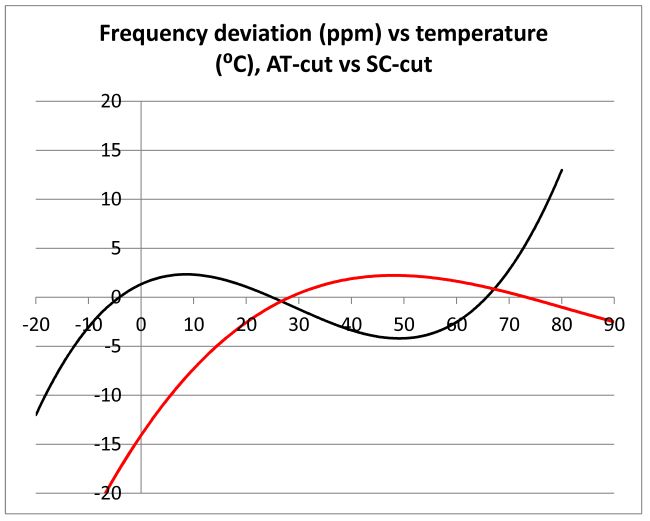Another hack you can do with the SDR USB sticks – mount the clock crystal (28.8 MHz) remotely, feed a stable RF signal at any frequency you desire, and use it a as a thermometer. This will work great at room temperature and up to about 50 deg C, but beware, the ready will be ambiguous at higher temperatures. Here is a quick experiment:
Signal was supplied at 1000 MHz, from a virtually perfectly stable source. At some point, the crystal was touched with a finger (making sure not to touch any of the traces or components, as this could capacitively affect the oscillator). Surprisingly, the frequency first goes down (-0.6 ppm), and then up (+2.5 ppm).

Why is this so surprising – let’s have a quick look at typical crystal oscillators, there are several types, AT-type (most common), SC-type, and closely related IT-type, and others, less common. Nearly exclusively have I come across AT-type so far, for all kinds of cheap clock application. AT type means: inversion point at room temperature, then the frequency decreases a bit with temperature, to about 60 degrees C, then it increases again. See the black curve in this diagram (note that the absolute values are just typical, arbitrary, and change with cut angle tolerance):

Red line shows the typical characteristics of a SC (or IT)-cut crystal.
Rather than the expected AT-typical transition through a minimum frequency, when going from about 60-70 deg C, down to 35 deg C (body temperature), we observe just the opposite behavior (more like SC-type) – reference frequency goes through a maximum (which is a minimum of the shown signal frequency, if the signal is a constant 1000 MHz).
So it seems, the manufacturer did actually consider a relatively high operating temperature of this device when selecting the crystal, which is running at about 60 degrees – just the rough temperature of the board/crystal.
An AT-type would have been much counter-productive, because this is optimized for constant frequency over a broad range of temperatures, say, -10 to 60 deg C. However, for the SDR USB stick, the temperature related frequency change should be minimal at and around the hot operating condition of the board – I don’t think this is just coincidence, but somebody acutally put some thought into getting a device frequency stable, without any ovens or other compensation devices.
